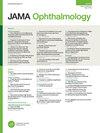Treatment of oxidative stress with chelation therapy.
引用次数: 1
Abstract
mentosa. Hahn et al 1 have documented higher iron levels in eyes of patients with age-related macular degeneration than in eyes of age-matched controls (particularly chelatable iron deposition in the retinal pigment epithelium and Bruch membrane). Because iron catalyzes the Fenton reaction (which produces hydroxyl radical), these results may mean that ironmediated oxidative stress contributes to retinal degeneration in age-related macular degeneration. Furthermore, mice deficient in the ferroxidases ceruloplasmin and hephaestin accumulate iron in the retina and subsequently have retinal degeneration with features of age-related macular degeneration. 2,3 In these mice, iron chelation with the orally absorbed and cellpermeant iron chelator deferiprone (Ferriprox) ameliorated oxidative stress and protected against iron overload–induced retinal degeneration. 4 Because other investigators showed that the iron chelator deferoxamine can protect against retinal light damage and retinal ischemia reperfusion injury, Hadziahmetovicetal 5 decidedtotesttherecentlyUSFoodandDrug Administration–approved drug deferiprone because it is orally absorbed and has not been associated with retinal toxic effects in patients or mice. In the current issue of Translational Vision Science & Technology, Hadziahmetovic and colleagues report the ability of deferiprone to preventretinaldegenerationin2distinctpreclinicalmodels: sodium iodate (NaIO3)–induced retinal degeneration and the rd6 mouse. Sodium iodate is a retinotoxin, anditssystemicadministrationrelativelyselectivelydamagesretinalpigmentepitheliumandphotoreceptors.The rd6mutationaffectstheMfrpgene,afrizzled-relatedgene expressed in the retinal pigment epithelium. Mice homozygous for this mutation have an early-onset, slowly progressive loss of photoreceptors. Theinvestigatorsfoundthatsystemicpretreatmentand concomitant treatment with deferiprone modestly improved photoreceptor survival and markedly improved retinal pigment epithelium survival in the NaIO3model. Deferiprone also modestly improved photoreceptor survivalinrd6mice.Whatisthemechanismbywhichdeferiprone exerts these effects? The investigators found that deferiprone diminished NaIO3-induced upregulation of antioxidantandcomplementgenes(C3)causedbyNaIO3. Deferiprone also protected against NaIO3-induced reduction in the levels of visual cycle genesRhoandRpe65, consistent with retinal protection. These and other findings indicate that deferiprone reduces oxidative stress. The finding that deferiprone treatment ameliorated hereditary retinal degeneration due to the rd6 mutation in B6.C3Ga-Mfrprd6/J mutant mice is consistent with the previous work of Obolensky et al, 6 who found that deferoxamine provides functional and structural retina rescueintherd10mousemodelofretinitispigmentosa.Presumably, amelioration of oxidative stress also reduces photoreceptor damage in these models of human retinitis pigmentosa. 7 The dose of deferiprone used in this study is about 3-fold higher than that given to humans treated for systemic iron overload. In future studies, the investigators will examine both dose response and dosing frequency. The apparent lack of retinal toxic effects of deferiprone combined with the evidence that it can protect the retina against iron overload, NaIO3, the rd6 mutation, and light damage suggest that it merits further investigation for potential treatment of diverse retinal disorders. The results of these deferiprone experiments indicate that iron chelation may serve as a protective agent not only against iron overload–induced retinal degeneration but also against retinal disorders in which iron dysregulation is not the primary cause. In a Research Highlight in Translational Vision Science & Technology, Fliesler 8 notes that “drug repurposing” is a current buzz phrase in translational medicine. Deferiprone has been used for the treatment of thalassemia major and is currently being used in clinical trials in the United States for treatment of contrast-induced acute kidney disease and for slowing the progression of chronic kidney disease. The present article by Hadziahmetovic et al 5 may lead to such repurposing of deferiprone and thus represents yet another potential application of chelator-based therapeutics.螯合疗法治疗氧化应激。
本文章由计算机程序翻译,如有差异,请以英文原文为准。
求助全文
约1分钟内获得全文
求助全文

 求助内容:
求助内容: 应助结果提醒方式:
应助结果提醒方式:


